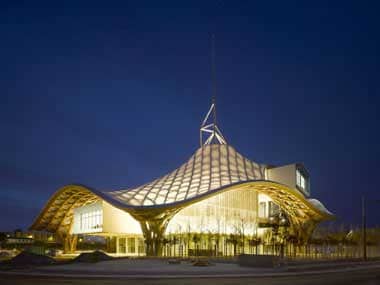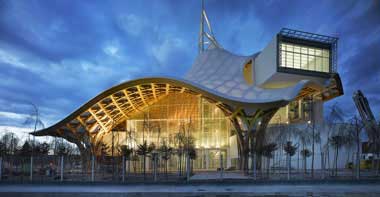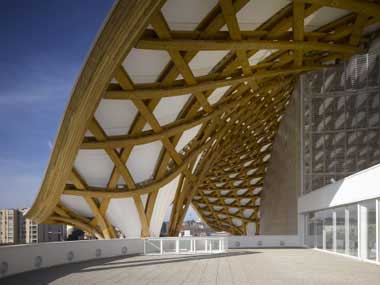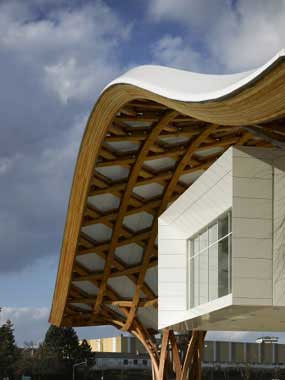The Centre Pompidou-Metz will act as the driving force behind the urban renovation of a 50 hectare area formerly occupied by a freight railway station dating from the German annexation, a fair ground, and a Gallo-Roman amphitheatre seating 25,000.
The huge tensile structure roof, made of translucent fiberglass covered in teflon, is supported by a mesh of hexagonal modules constructed from glue laminated timber beams. The building is topped by a 77 meter high metal spire, a reference to the 1977 opening of the Centre Pompidou in Paris.
The Centre also contains an auditorium seating 144, a studio theater seating 196, a bookshop, and a rooftop café.
The Centre is surrounded by two gardens designed by Nicolas Michelin Associés and Paso Doble. The slightly sloping front square, equivalent in size to the Piazza in front of the Centre Pompidou in Paris, forms a direct pedestrian crossing to the train station.
In keeping with the current trend towards “green” architecture, the City of Metz and the Metz Métropole urban community asked that the new building conform to their policy of sustained development, perpetuating a long-standing local tradition of green spaces and pedestrian areas. The vast suspended roof was thus designed to protect the facades from winter storms while providing shade in summer.
The total area is 10,700 square meters and the gallery space has 5,000 square meters. It was completed in 2010.
“We wanted the architecture to convey a sense of well-being, openness and multi-cultural mix that has a direct sensory relationship with its surroundings.” Shigeru Ban and Jean de Gastines



The galleries, located in three 80 meter long steel containers organized around the central tower, protrude through the roof. Large scale plate glass windows at the ends overlook the city and landscape beyond.




